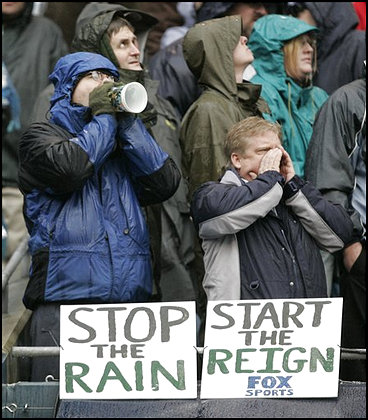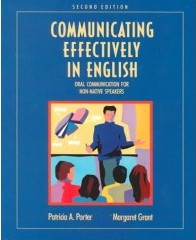Chile and civic engagement
 Michelle Bachelet, the Socialist presidential candidate of the pro-government coalition, shows her inked thumb after voting during run-off presidential elections in Santiago, Chile, Sunday, Jan. 15, 2006. (AP Photo/Roberto Candia). From "Socialist Bachelet Wins Chilean Presidency."
Michelle Bachelet, the Socialist presidential candidate of the pro-government coalition, shows her inked thumb after voting during run-off presidential elections in Santiago, Chile, Sunday, Jan. 15, 2006. (AP Photo/Roberto Candia). From "Socialist Bachelet Wins Chilean Presidency."Taking a freshman seminar my first term in college, about Latin America, was a transformational experience for me. Learning about things like the U.S. involvement and/or complicity in a military overthrow of the elected president, Salvador Allende, and the subsequent campaign against progressive and leftist citizens that imprisoned and killed thousands. Seeing the documentary "Battle of Chile" within the first two weeks of school, seared me, and started me on a path of learning how to think for myself.
Here is something I just sent to the Comm-Org email list, in an ongoing thread about "is organizing democratic?":
In college, I was a student activist, or what passed for one in the late 1970s and early 1980s. Among other things, I was involved in curriculum and course evaluation issues. And I paid attention to civic engagement issues and items (e.g., I found handbooks by the old Citizen Involvement Training Project at the college bookstore) in the context of my activities.
One of my lines from that time is that "you can't expect someone to graduate from college, after being educated for 13-17 years in relatively authoritarian settings, and upon graduation, expect them to become active, free thinking, participating members of society." (Yes, by then I had read Schooling in Capitalist America and The Night is Dark and I am far from home...)
(Note: I will be forever grateful to Frances Wyers Weber, a professor of Spanish then at the University of Michigan, for teaching a freshman seminar about Latin America--which I took because I knew nothing about Latin America and it sounded interesting. This course, my first semester in college, started me on the path of "learning how to think for myself." )
So when I talk about re-conceptualizing the planning profession towards one of civic engagement and enabling and putting at the center, citizen involvement in the processes of local government, it is within the rubric and principles of participatory democracy and citizenship more generally.
Granted, people don't seem to be as much interested in this as they are in how their region's (insert yours here) professional football team fares in the playoffs.
 Fans shout out during the first quarter of the NFC divisional playoff football game between the Washington Redskins vs Seattle Seahawks, in Seattle, Saturday, Jan. 14, 2006. If Seattle exceeds its previous record of 33 consecutive days of rain, set in 1953, it won't even be a blip in the national weather record books. No place compares to the achievement of Hawaii, where Kaneohe Ranch on the island of Oahu recorded 247 consecutive days of rain from Aug. 27, 1993 through April 30, 1994. (AP Photo/Elaine Thompson)
Fans shout out during the first quarter of the NFC divisional playoff football game between the Washington Redskins vs Seattle Seahawks, in Seattle, Saturday, Jan. 14, 2006. If Seattle exceeds its previous record of 33 consecutive days of rain, set in 1953, it won't even be a blip in the national weather record books. No place compares to the achievement of Hawaii, where Kaneohe Ranch on the island of Oahu recorded 247 consecutive days of rain from Aug. 27, 1993 through April 30, 1994. (AP Photo/Elaine Thompson)But because my concerns revolve around the structure and system of citizen participation and local power and government institutions, although within the context of land use specifically (cf. Urban Fortunes: A Political Economy of Place by Logan and Molotch, which derived from Molotch's original paper from 1976). What does interest me are three things:
(1) citizen participation and democracy issues generally (e.g., Deepening Democracy or Empowered Participation, the first co-authored by Wright and Fung, the latter by Fung) but in the context of what I prefer to call "sustainable land use and resource planning;"
(2) developing the meta-learning, techniques, and training so that citizens can be deliberative, informed, and engaged, and aware enough of the process techniques so that they can apply these methods to other settings and situations (too often I find that citizens are not so equipped). And note to Randy Stoecker, while I haven't yet picked up and read your new textbook, Research Methods for Community Change : A Project-Based Approach, I think these are the kinds of methods that people need to learn. It is on my list of books to read.--
With an engaging, friendly style and numerous real world examples, author Randy Stoecker shows readers how to use a project-based research model in the community. The four features of the model are:
* Diagnosing a community condition
* Prescribing an intervention for the condition
* Implementing the prescription
* Evaluating its impact
At every stage of this model there are research tasks, from needs and assets assessments at the diagnosis stage to process and outcome studies at the evaluation stage. Readers will also learn the importance of involving community members at every stage of the project and in every aspect of the research, making the research part of the community-building process; (Sample chapters are available on the publishers website) and
(3) linking (1) and (2) within the context of making the institutions of local government more accessible, open to, and responsible to citizens, and an environment that is citizen-centric. (See as an example of some of my thinking about this the blog entry "More on Metro and rethinking transit marketing.") [Note: point (3) needs to be further developed.]
Of course, this has been influenced substantively by my earlier experiences and then the blessing-curse of coming to DC and having my first job at an advocacy group with Nader-lineage.
So, it is quite interesting that a couple days ago I happened across a textbook that teaches English as a Second Language, Communicating Effectively in English (1992), by Patricia A. Porter and Margaret Grant, then of San Francisco State University.
 I don't envy the non-native English speakers who are assigned this text. It's a great book (see below) but it's written at the high school level, or beyond. The preface is written for teachers, not students.
I don't envy the non-native English speakers who are assigned this text. It's a great book (see below) but it's written at the high school level, or beyond. The preface is written for teachers, not students.This textbook looks like a basic text in citizenship-involvement--it teaches communications skills through participation in civil society. It's really quite interesting and amazing and worth your looking up. The units are:
1. Understanding your audience and being understood
2. Getting Information: Interviews and Conferences
3. Providing Information: Instructions and Demonstrations
4. Providing Information: Group Discussions and Presentations
5. Proposing Changes: Solving a Problem
6. Persuading Others: Taking a Position.
From the preface: "In the first three units, students work with information that is known to them or learned through interviews. In the last three units, students must work with information from more challenging outside sources, such as articles and reference materials in the library. The first four units focus on informative presentations, while the last two include expanded guidelines and practice in argumentation."
Now if we could only get native speakers of "American" to learn this methodology...
Index Keywords: civic-engagement



0 Comments:
Post a Comment
<< Home